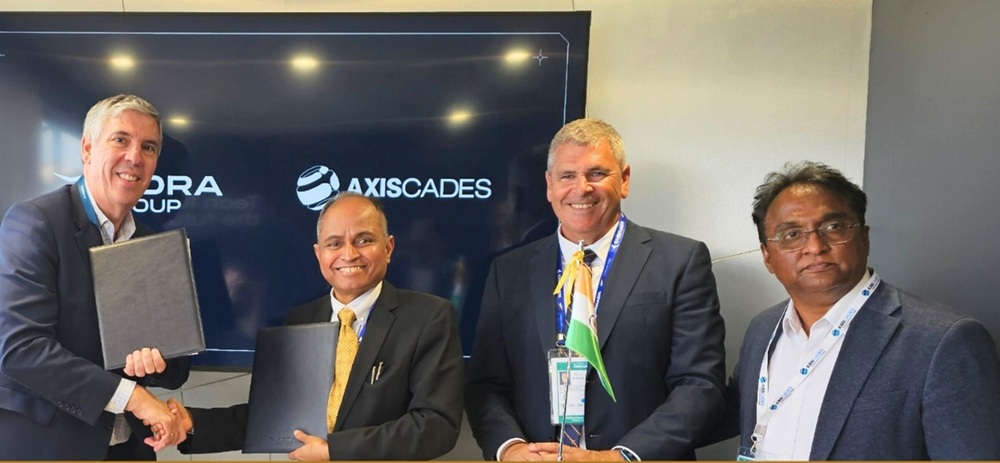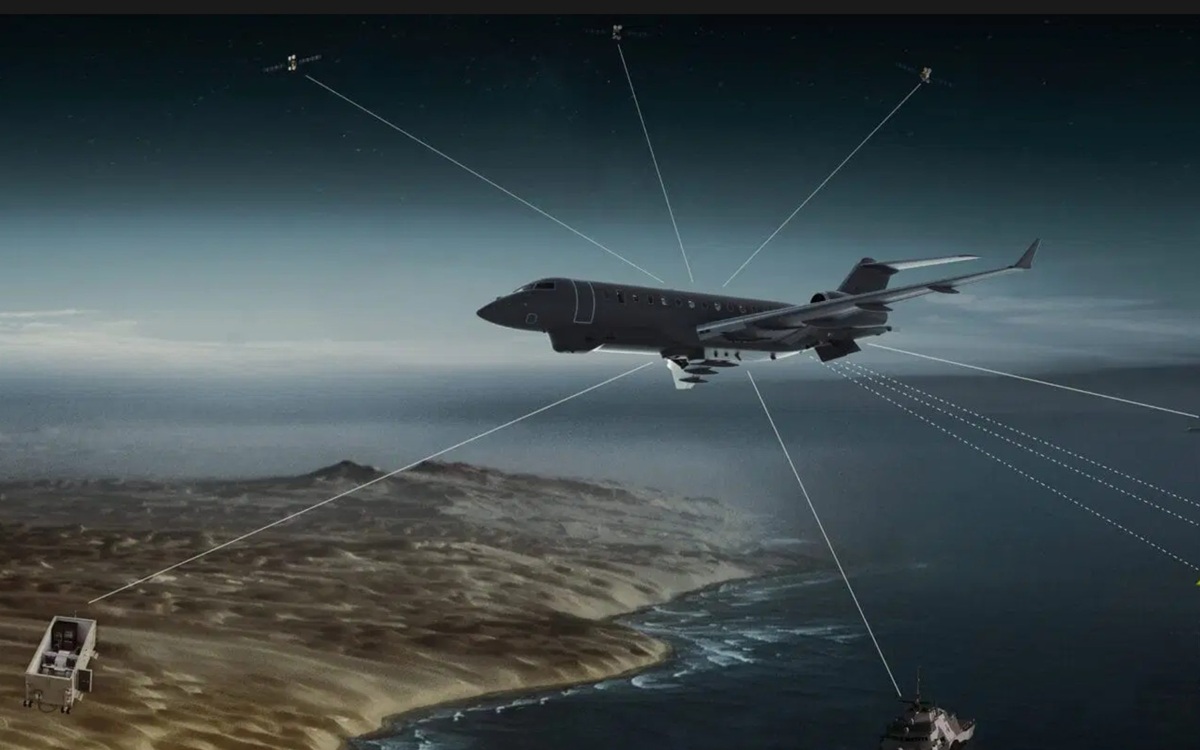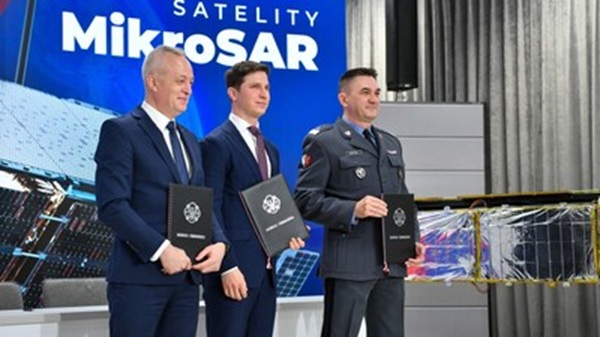VELIZY-VILLACOUBLAY, France: Dassault Systèmes has announced a transformative partnership with Raphe mPhibr, India’s leading aircraft manufacturer specializing in unmanned aerial vehicles (UAVs), marking a significant leap in aerospace innovation and design efficiency. Raphe mPhibr has adopted Dassault’s 3DEXPERIENCE platform to revolutionize the conception, validation, and production of aircraft systems, dramatically shortening the product development cycle and enhancing design capabilities.
The burgeoning demand for unmanned aircraft systems is driven by their expanding roles across defense, homeland security, agriculture, logistics, and infrastructure monitoring. Industry forecasts estimate the global UAV market to reach approximately 6.5 million units by 2030. In alignment with India’s ambition to achieve self-reliance in aerospace and defense, Raphe mPhibr sought a cutting-edge solution to integrate advanced scientific principles and technology into its design processes. The goal was to engineer next-generation UAVs with superior strength-to-weight ratios and enhanced payload capacities, critical for meeting diverse operational needs.
Raphe mPhibr’s unique approach involves designing and manufacturing all components—from metals and composites to electronics—within a single, integrated facility. The adoption of Dassault Systèmes’ 3DEXPERIENCE platform has been pivotal in reducing the company’s product development cycle, enabling the seamless integration of physics-based simulation and manufacturing considerations early in the design phase. A standout achievement facilitated by the platform was the development of Raphe mPhibr’s proprietary 4kW two-stroke engine. Traditionally a multi-year endeavor, the engine’s design cycle was compressed to just three months. This acceleration was made possible by leveraging the platform’s capabilities to optimize parts for 3D manufacturing, resulting in a weight reduction of 700 grams (1.54 pounds) while delivering performance that surpasses engines seven times heavier.
The 3DEXPERIENCE platform also empowered Raphe mPhibr to innovate in composite part manufacturing through an integrated design and simulation workflow. This shift towards 3D-centric design thinking has streamlined part development, enabling the creation of high-performance aerodynamic surfaces that push the boundaries of UAV engineering.
Vikash Mishra, Chairman of Raphe mPhibr, highlighted the platform’s ability to facilitate organic, nature-inspired design approaches beyond traditional geometric constraints, stating, “The 3DEXPERIENCE platform allows us to think in 3D—not in straight lines, circles, or squares. It’s the best software to create our vision”.
David Ziegler, Vice President of Aerospace and Defense Industry at Dassault Systèmes, emphasized the strategic importance of this collaboration: “Raphe mPhibr’s adoption of our 3DEXPERIENCE platform shows how innovators are building tomorrow’s advanced air mobility solutions with virtual twin experiences. Its focus on in-house design sets a new benchmark for engineering excellence. The platform combines all aspects of design, simulation, and collaboration in a single environment for innovation and operational efficiency”.
Raphe mPhibr’s rise is further underscored by its recent closure of a landmark $100 million funding round led by General Catalyst, marking the largest private investment in an Indian aircraft manufacturer to date. The company employs over 500 professionals and holds more than 100 unique intellectual property assets. Its UAV products have collectively logged over one million kilometers (621,371 miles) in active service with Indian security forces. The fresh capital will accelerate expansion plans, including workforce growth, enhancement of research and manufacturing facilities, and the deployment of virtual twin experiences for comprehensive lifecycle management.
The company’s vertically integrated aerospace campus in Noida is unmatched in India’s private sector, encompassing design, simulation, additive manufacturing, composites, engine design, and military-grade electronics development. Unlike traditional manufacturers that rely heavily on outsourced components, Raphe mPhibr’s full-stack model ensures stringent quality control and rapid innovation cycles. This approach aligns with India’s strategic vision to boost indigenous defense capabilities and reduce reliance on foreign suppliers.
Raphe mPhibr’s product portfolio includes the world’s first operational drone swarm platform (mR10), the high-altitude logistics UAV (mR20), the Bharat surveillance drone tailored for diverse terrains, and the X8 maritime patrol drone. The company has also developed India’s first indigenous military-grade autopilot system and a lightweight internal combustion engine optimized for UAV applications. These innovations have garnered both national and international interest, with strategic partnerships involving global aerospace leaders such as Dassault Systèmes, Safran, and HENSOLDT.
General Catalyst’s Managing Director Neeraj Arora highlighted the broader significance of this investment, noting that Raphe mPhibr is poised to play a crucial role in India’s defense modernization efforts and global aerospace supply chains. “Raphe is at the heart of this transformation. This investment aligns with our global resilience thesis and our belief that India can be a major defense exporter in the coming years,” he said.
As Raphe mPhibr scales production to meet increasing demand—targeting monthly outputs of over 150 high-altitude logistics drones and 300 smaller UAVs—the company remains committed to advancing system intelligence and autonomy. CEO Vivek Mishra affirmed, “The goal is to be ready for both current and emerging defense scenarios, and to co-create solutions by working directly with users on the ground”.
This collaboration between Dassault Systèmes and Raphe mPhibr exemplifies the fusion of advanced digital technologies with indigenous aerospace manufacturing, positioning India at the forefront of unmanned aerial system innovation and self-reliance in defense technology.





